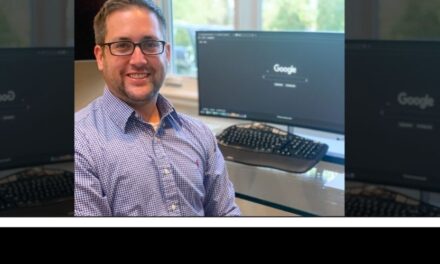Nicholas Mirisis serves as the CEO and a Board Member at HomeTown Ticketing, an EdTech SaaS company aimed at maximizing revenue for educational institutions through innovative management platforms. His dedication to assisting educational leaders in navigating challenges in events, operations, and fundraising underscores his focus on optimizing financial resources for the betterment of students and their programs. Concurrently, since 2023, he has held the position of Operating Partner at Fulcrum Venture Group.
With a career spanning over two decades, Mirisis has excelled in growth-oriented executive roles, showcasing a stellar track record in pioneering acquisition, revenue generation, and retention strategies. Notably, at SamCart, he served as the Chief Revenue Officer and President/GM of eCommerce, achieving substantial growth from $11 million to $30 million in Annual Recurring Revenue (ARR). Prior engagements include pivotal roles as the Chief Marketing Officer and Chief Revenue Officer at GoCanvas, where he contributed to doubling ARR from $19 million to $46 million. Mirisis also made significant strides at Dude Solutions, overseeing its expansion from 30 employees and $1 million ARR to over 750 employees and $100 million in revenues post-Series-B capitalization.
Nicholas Mirisis holds a Master’s degree from Johns Hopkins University and a Bachelor’s degree from North Carolina State University. His board memberships included the Consortium for School Networking and the National Business Officers Association. Acknowledged as a customer-centric thought leader adept at navigating evolving market dynamics, Mirisis’ capacity to translate vision into actionable plans has been pivotal in driving organizational success. His commitment to building high-performing teams and scaling GTM strategies underscores his continued impact in the tech industry.
Reflecting on your diverse roles in different sectors, what were some of the foundational experiences in your early career that prepared you for leadership in EdTech and beyond?
In the initial stages of my career, I credit the entrepreneurial spirit and startup hustle of SchoolDude (former Dude Solutions, now Brightly) for providing some of the most formidable lessons on growth, adaptability, innovation and anticipation. Our founders would always tell us that the early stage of a startup is the ultimate race against insolvency. And that constraint provides you with a hunger to outwork and outsmart the incumbents, by being more attune to the customer and market needs, and anticipating what is their biggest unsolved problem, that we can cure. The marketing, business development, strategic partnerships, public affairs, M&A, and innovation growth strategies helped me formulate what I love, and what I wanted to focus on the balance of my career – software companies who have achieved product market fit, and need to implement a go-to-market playbook to achieve outsized growth.
I look back now and realize how incredibly fortunate I was to join and be in the first 30 at SchoolDude, and to participate in the wild ride from $1M of ARR to >$100M. We expanded from a boot-strapped, small team, solely focused on public K-12 facilities, to conquer adjacent buyer problems in business, energy, automation, technology, transportation, event and athletic management – as well as to expand to adjacent markets, first higher education, then private and independent schools, followed by local and county government. One of the seminal lessons of the Dude journey, was after we boot-strapped and grew the company to over $32M ARR, we partnered with Warburg Pincus for a minority investment to accelerate growth. The greatest lesson post capitalization was approaching all decisions with a new mindset, accelerating the level of impact, compressing the time for it to occur. With financial stakeholders who wanted us to succeed, and succeed urgently, we re-doubled our startup hustle to think of how we can deploy programs and innovations faster to have larger impact for our customers, to have larger impact on the health of the company. Acceleration of results, compression of time is a hallmark of the scalable system that I’ve taken with me to the journeys of GoCanvas, SamCart and now HomeTown.
Throughout your tenure at HomeTown Ticketing, you’ve been instrumental in driving significant growth. Can you discuss a particular strategy that was highly effective, and might it be applicable to other sectors?
When I first became Marketing Leader for SchoolDude, one of the immediate charters was moving the organization from push/reactive/tactical and traditional marketing to pull/proactive/strategic and digitally focused marketing. It was vital, as our buyer was evolving from the traditional 60 year-old operations professional who had dedicated their whole life to the public sector – being replaced by the 30-40 year old tech-savvy buyer with experience in the private sector. It was also critical from a business continuity and growth perspective, as we were too reliant on the push/traditional marketing channel with 90% of leads generated via relationship, in person, trade show or event marketing.
The transition of the buyer from the traditional operations professional (they were a joiner and attended in person events and were members of their regional and local association) to the tech savvy operations professional (research online, connect virtually, do more homework before speaking to Sales) left us vulnerable in our GTM approach.
Marketing led the way to create a user-generated best practices online community as our new web strategy and replacing our static brochure-type website. The goals were:
1) Digital ecosystem where user-generated content and best practices would create a vibrant knowledge base.
2) Allow access and registration by clients and non-clients, giving us a channel to target the ‘searcher’ buyer persona at a low CAC.
3) Allow client advocates to champion their results, impact and success, a more credible reference than a sales generated cold call .
4) Index all the user generated content to help with our SEO, relevance and domain authority.
5) Use operational data, insights and KPIs as a hook for clients and non-clients. For Clients, an upsell mechanism to see value in products they were not using based on the savings data we shared for other affinity/cohort clients. For non-clients, the ability to see the types of data, reports and executive dashboards they could receive if they were a Client.
The Community was ultimately integrated into our CRM, SSO authentication, product applications, Marketing Automation and even our Google Analytics account.
- We were able to track digital body language and syndicate that activity into CRM for the company to have a full 360 of every account and contact level interaction.
- We could dynamically target contacts based on their content engagement or add them to nurtures/drips based on their scoring and patterns.
- We could adjust paid/display search campaigns based on search intent inside the community.
- And we could dynamically create best practices content landing pages for them based on their search and content consumption within the community.
All of this contributed to our sales pipeline growth within 24 months (184% in 2013 and 260% in 2014).
The Community and the KPIs/data became the technology-enabled platform that allowed our services team to triage accounts, as well as establish the prescriptive health checks to ensure renewal/retention and expand share of wallet.
The second significant growth inflection point came after our Series A when we had a difficult innovation period. The vast majority of the investment was allocated to engineering to build a new, scalable platform, which meant we would halt all evergreen engineering efforts to allow the 100% focus on the new build. In concert with this, our investors wanted a price escalation for 2015, however we now didn’t have the ability to use engineering resources to monetize new features/benefits for existing clients.
The GTM organization took the leadership role of examining existing IP and determining if/how we could commercialize it. With our CRO at the time, I led the cross-functional team that included representatives from Sales, Marketing, Support, Service, Operations, Finance, and Product Management.
Our goals were:
1) Illustrate value and innovation to the market, during a 24-36 month window when engineering would NOT be releasing new products or major enhancements.
2) Examine and monetize existing IP or assets.
3) Simplify the solution offering to reduce friction in the sales process.
4) Establish a new pricing framework with annual escalations and the value proposition to support them.
We researched:
- Share of wallet/penetration rates of clients
- Implementation statistics
- Success ratios and finally
- Investment – the CAC to sell the various solutions to clients
- COGS analysis – the amount of time, resources and efforts Clients consumed post sale
The research yielded clear clusters and buying patterns, which formed the basis for our initial product bundling and packaging work. This also served to reduce our CAC by not deploying a sales rep to sell the incremental/upsell unit at a higher marginal cost.
The COGS analysis allowed us to financially model our clients with several dimensions (propensity of spend, resource cost, renewal rate, profitability, etc.) and we authored a CLTV model of our full client profile. We constructed a simplified services package/offering that was matched to their CLTV/profitability – with high CLTV clients receiving higher value (and resource intensive) services that could also generate incremental subscription revenue and the low CLTV/profitability clients moved into self-service formats.
With the research completed and CLTV models in place, we simplified our packaging and positioning – reducing 35 solutions down to a core of five value prop suites and 15 products. The mass-market / most common entry product “reactive maintenance” was bundled with our preventive maintenance and inventory solution (which were previously sold a la carte) and repackaged into an “essentials” offering. New clients would purchase the new “essentials” bundled product, which included seamless integration between the three prior stand-alone solutions. In addition, the additive effect of the bundle solution allowed us to increase pricing to 45% more than the prior total contract value for the three independent solutions.
For existing clients, we built upon the work that marketing had pioneered with the community and data platform. We leveraged that prior IP and commercialized it to a new product called “Dude Data” and added additional KPI libraries, advanced reporting, executive dashboards and automated reports with natural language narratives.
To not distract the sales organization from the new client acquisition and upsell work, we established a GTM task force of Marketing, Quota Carrying Account Managers and Support team members. This team was chartered with: (1) making proactive outreach to the Client cohort (prior to their next renewal) and (2) position / sell the value of Dude Data and/or the Essentials bundle product offering, to secure the price escalation for their 2015 contract.
The team, which contacted all 6,000 clients using the CLTV and propensity profiling we developed, had scripted talk tracks based on buyer sophistication and prior satisfaction score with us. At the conclusion of the Task Force’s 18-month charter, 70%+ of the accounts had migrated to new contract pricing, netting the business an incremental $15M of subscription revenue.
How has your leadership style evolved as you transitioned from roles at companies like SamCart and GoCanvas to leading HomeTown Ticketing and engaging with Fulcrum Venture Group?
My leadership style has evolved to focus more on empowerment and strategic vision. In my first manager role, I had the false belief that leading meant ‘doing’ all the work and making sure you were seen for it – IE: credit. After two decades, I’ve refined my personal leadership philosophy and it’s about three core principles:
- Aim People; Ensuring we have a clear strategy and aligning team members to achieve it.
- Get Things Done; Empowering our team members to accomplish the strategy, clearing the road-blocks and providing the best conditions for them to achieve results and success.
- Build Relationships; No achievement occurred through singular effort — we win as a team.
And equally important to achieving these goals is continuously learning and helping myself get better. I don’t believe I have all the answers and love learning from folks who bring facts/knowledge that I don’t have, as well as, I value learning from other companies and incorporating their best practices.
I love working for mission-oriented companies that help mission-driven customers. Ultimately, HomeTown wants to hire and retain every great, customer-focused/ customer-obsessed employee, who craves seeing what they do on a daily/monthly/annual basis and the impact it has on students and their academic, athletic and extra-circular passions.
With your commitment to leveraging technology in education, what future trends in EdTech do you find most exciting, and how is HomeTown Ticketing positioning itself to lead in these areas?
As with all innovations, the power, potential and possibilities of AI and machine learning are just now coming into focus; The concepts and applications we are discussing today may be obsolete by the next academic year, given how fast entrepreneurs and educators are finding new uses for AI in all facets of education. Since its founding, HomeTown has prided itself on partnering with educational institutions, building an event, digital ticketing and revenue management platform that is specific to the needs of education, and investing in experts, who reside in our communities, to provide best practices, customer success and customer support. AI and machine learning do provide a tremendous computing advantage to identify patterns in event management and engagement analytics, as well as share deeper insights and more tailored best practices with our schools. By leveraging advantage computing, big data analysis and other intelligences, we can offer predictive analytics that help schools anticipate attendee needs and preferences, optimizing every aspect of event planning and execution. This proactive approach not only enhances the user experience but also drives operational efficiency, setting HomeTown Ticketing as a leader in the integration of cutting-edge technologies in the EdTech space.
What are some of the biggest challenges you face when introducing new technologies into traditional educational environments, and how do you address them?
One of the biggest challenges is frankly, the calendar. Our Athletic and Activity Directors are busy up until graduation – and then when students leave, they would like to take a couple weeks off to recharge. We have a very short window, usually late summer when everyone returns from vacation and before back-to-school operational meetings begin, to help our partners implement change for the next academic year. This requires us to be precise with our recommendations, delivering the proven best practices that work at other schools and districts that share similar profiles. And education welcomes new leaders, employees and volunteers every year – and this is one of the reasons we offer a dedicated training and enablement team. If one of our schools has a new Assistant AD or event manager join, they can receive training to be an expert in the system, or should they ever need a refresher or have a question, they can reach out to our team who can always help answer a question, give them a refresher or conduct a virtual tune-up session. Our approach includes customized training sessions that address specific user concerns and highlight the practical benefits of new technology. This helps in fostering a positive attitude toward change, ensuring that technology integration meets real needs without disrupting established practices, and significantly enhancing the educational experience.
Your leadership has emphasized the importance of data-driven decision-making. Could you provide an example of how data analytics transformed an aspect of business strategy at HomeTown Ticketing?
Data analytics has been transformative in optimizing event strategies at HomeTown Ticketing. As we dove into our data, we observed that our schools in Ohio who were most actively leveraging social media to engage with their fans and community, observed a 20% increase in attendance than those schools not leveraging social media. So we used this as an opportunity to educate ADs on the importance of building an online brand, the power of social media marketing, and how to leverage tools and automation features offered by HomeTown, to deliver the message to the community and capture their commitment to attend, and support, in-person, community based athletics. Additionally, these insights allow us to forecast attendance more accurately, help our schools manage inventory better, and tailor marketing efforts to increase engagement and turnout, thereby driving long-term loyalty from our customers and their fans.
How do you see digital transformation shaping the future of educational institutions’ event management and fundraising efforts?
Since becoming CEO, I’ve traveled in-person to more than 70 districts and virtually met with more than 200 ADs and Activity Directors; Nearly every conversation of the last six months has started the same way – “we have a major budget crisis”. Some are faced with budget/planning gaps from the expiration of the federal CoVid stimulus money, others are experiencing demographic shifts post CoVid as parents consider new locales for work and work/life balance, and the vast majority are trying to solve the competing factors of expectations for their programs (by students and parents) continue to increase while budgets stagnate or decrease.
The innovations in online school fundraising will lead to a revolution in EdTech in the next several years. The budget pressures I mentioned above will not disappear overnight and ADs will be forced to find new sources of sustainable (year over year, guaranteed) revenue, or make sacrifices to their offerings, which ultimately harm students and their future life goals.
Annually, schools raise billions to enhance their budgets and provide better resources for students and there is a movement toward digital fundraising that aligns with broader societal trends toward digital engagement. My prediction is, the revolution occurring within online school fundraising has the potential to return MILLIONS of hard-earned dollars, that parents, family members, friends and community supporters generously give to support athletic and school fundraisers – and put that money back into the programs that benefit students, instead of in the pockets of private companies.
Every dollar saved on third-party fees is a dollar that supports a student’s education, extracurricular activities, or essential school supplies. It’s not merely fundraising; it’s an investment in the future of every student who attends a public school in America.
And, we’ve seen an evolution in this space before. Students a decade ago would go door to door selling cookies, candy, discount cards, or mulch, mattresses and Christmas trees. This old school way was a combination of security threat, inventory chaos, and wasted time for coaches – and at the end of the day, the programs gave up 80% of the funds, and only got to keep 20% for all that work. That was eventually replaced with online fundraising, where students would ask for a donation online, and in this model, the programs lose 20%-30% of the funds raised, with those fees going to the private fundraising companies. Private companies have earned significant revenues over this last decade; there is a recent Bloomberg Businessweek podcast from 2023 where the CEO of one of these companies boasts about generating more than $160M in revenue. To me, this isn’t something to brag about, you’ve taken money out of the classroom and out of the hands of those who need it most.
The reason we partnered with a platform like Schoolfundr is because they are the only EdTech company providing a fee-free fundraising environment that allows schools and students to keep all the funds they raise, minus payment processing fees.
I say revolution as the conversations are now coming into the open about how much these private companies have been taking from parents and the community over these last 10 years. Earlier this year, I was asked to present at a large FL district, during their monthly all Athletic Director meeting. I shared what was new at HomeTown, the additional free resources we were providing on marketing and websites/communications solutions, and then discussed our partnership with Schoolfundr and their model of schools keeping everything they raise, minus the standard Stripe processing fee of 3%. Unbeknownst to me, sitting in the meeting was a member of the School Board. The School Board member asked me why we partnered with Schoolfundr and how their model works, and I replied we shared common values to help and partner with our schools – and to help them save time and money. And the Schoolfundr model aligned the mission and values of the donor, school and company – and if the donor loved that Sf was providing this solution, they could leave an optional tip to support the company. The School Board member turned to the AD and asked what company they use and what that model was; The AD shared the provider and that the school keeps between 75% and 80%. The School Board member asked why they use the vendor, and the answer was b/c the sales rep delivers doughnuts to the monthly meeting. And instantly, the School Board member said, “wouldn’t we rather than 97% and tens of thousands of more dollars, instead of free doughnuts.”
The days of being bribed with doughnuts or biscuits or bagels may be behind us, especially as educational leaders need every additional $800 to buy one new helmet or $700 for a marching band uniform. Dollars back in the programs, school and districts budget is a better way to support education.
Can you share how the partnership with the Texas High School Coaches Association (THSCA) has impacted the community and what it signifies for the future of digital ticketing in sports?
We love being a Cornerstone partner and supporting the Texas High School Coaches Association (THSCA) because of the critical role THSCA plays in helping all of the Coaches in TX, who are doing important, life-changing work developing student athletes and setting the foundational skills for a lifetime of success.
Over the last decade, HomeTown has seen great success in Texas, today serving nearly 1,500 high schools in the state. We are humbled by this honor and recognize we didn’t do it alone – we count THSCA, as well as two great partners, in the University Interscholastic League (UIL) and Dave Campbell Texas Football (DCTF), who together, have helped us meet, partner and serve, so many of TX districts.
At their regional meetings earlier this year, HomeTown shared three free, no-cost resources, to help Coaches and ADs spend more time in the weight room, or on the field or court with your athletes, instead of behind your computer screen. This included HomeTown Social Media, our new athletic websites, and maximizing your fundraising efforts by keeping every dollar raised, with Schoolfundr.
Given your extensive experience, what advice would you give to aspiring leaders in the tech and education sectors looking to make a significant impact?
For those looking to make an impact, my advice is to remain flexible yet focused. Embrace change, leverage technology to solve real problems, and always prioritize customer needs. Leadership in tech and education requires a balance of innovation, strategic thinking, strong relationships and a deep understanding of the human element. Additionally, cultivate strong communication skills and foster collaboration within your teams to harness collective creativity and expertise effectively. These elements are crucial for driving sustainable growth and navigating the complexities of the rapidly evolving tech and education landscapes.
Looking ahead, what are some long-term goals for HomeTown Ticketing, and how do you plan to achieve them? What role will innovative partnerships and technological advancements play in reaching these goals?
Our goal is to remain the customer-centric, relationship-oriented partner our schools and districts rely on. We firmly believe that by serving them, we can build a healthy and strong business that this industry can rely on for decades. Our goal is to continue to work with best-in-class EdTech companies that our companies trust and rely on, so we create an ecosystem that saves them more time, and more money, so they can have greater impact for their students.




